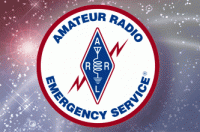|
Welcome,
Guest
|
TOPIC:
Hurricane Season 2012 12 years 3 days ago #67
|
The forecast for hurricane season 2012, which begins next month, is a bit more benign than past years, but that is no reason for complacency. Prepare now!
EXTENDED RANGE FORECAST OF ATLANTIC SEASONAL HURRICANE ACTIVITY AND LANDFALL STRIKE PROBABILITY FOR 2012 "We anticipate that the 2012 Atlantic basin hurricane season will have reduced activity compared with the 1981-2010 climatology. The tropical Atlantic has anomalously cooled over the past several months, and it appears that the chances of an El Niño event this summer and fall are relatively high. We anticipate a below-average probability for major hurricanes making landfall along the United States coastline and in the Caribbean. However, coastal residents are reminded that it only takes one hurricane making landfall to make it an active season for them, and they need to prepare the same for every season, regardless of how much activity is predicted. (as of April 4, 2012)" -- Philip J. Klotzbach and William M. Gray, Department of Atmospheric Science, Colorado State University, Fort Collins, CO 80523 ARES and Hurricane Operations Now is the time for ARES® members to assess their portfolio of communications equipment and disaster response knowledge. Here are several tips for amateurs involved with hurricane operations: • Monitor major HF hurricane networks during events this season. The Hurricane Watch Net (HWN) on 14.325 MHz is one of several key players. It serves either the Atlantic or Pacific during a watch or warning period and coordinates with the National Hurricane Center (NHC) in Miami. Frequent, detailed information is issued on nets when storms pose a threat to the US mainland. In addition to hurricane spotting, local communicators may announce that residents have evacuated from low-lying flood areas. Other amateurs across the country can help by relaying information, keeping the net frequency clear and by listening. See the HWN's website for more information. The net works closely with WX4NHC, the Amateur Radio station at the NHC. • The SATERN Net (Salvation Army Team Emergency Radio Network) provides emergency communication support to the Salvation Army and populations at large. They also handle health-and-welfare traffic. SATERN holds high profile nets on 20 meters (14.265 MHz) during major hurricanes and has a long history of excellence, discipline and service. Refer to the SATERN website for more information. • The Maritime Mobile Service Net (MMSN) meets on 14.300 MHz and is composed of hams who serve and assist those in need of communications on the high seas. According to its website, the primary purpose of the net is for handling traffic from maritime mobile stations. The network is recognized by the United States Coast Guard and has an excellent working relationship with that agency. The MMSN has handled hundreds of incidents involving vessels in distress and medical emergencies in remote locations, as well as passing health and welfare traffic in and out of affected areas. They also work closely with the NWS and NHC by relaying weather reports from maritime stations. • The VoIP SKYWARN and Hurricane Net operates by combining both the EchoLink and IRLP linked repeater networks, while handling critical wide area communications during major severe weather and tropical events. These operations have gained national stature in recent years and the net is a critical partner with WX4NHC. Whenever tropical weather is imposing a threat to the US mainland and certain other areas of interest, the VoIP WX net will be fully operational. See the VoIP SKYWARN and Hurricane Net website for more information. During hurricane events, there are usually two or three [national] regional nets (usually on 40 or 20 meters) that spring to prominence as major key assets to the disaster response on an ad hoc basis. Watch for these nets, as well as the nationally recognized networks described above, this season. Don't transmit on their frequencies unless you are absolutely sure you have something substantive to add, and then only under the direction of the net control station. ARRL Emergency Preparedness Manager Mike Corey, KI1U, adds that when ARES® activates in response to any tropical event, it is crucial that information flows up through the Section and is reported to Headquarters. "These reports allow us to develop the situational awareness and disaster intelligence that is required for us as an organization to support the Sections that are impacted," he explained. "In this way, we are able to respond to relevant requests from the media and finally to coordinate with the governmental and non-governmental organizations. This information also allows us to make the decision at Headquarters on whether to stand up the ARRL HQ Emergency Response Team to support and coordinate the operations." Source: ARRL E-Letter (5/16/2012) www.arrl.org/ares-el?issue=2012-05-16 |
|
Please Log in or Create an account to join the conversation.
Last edit: by WA1SFH.
|
Time to create page: 0.130 seconds
